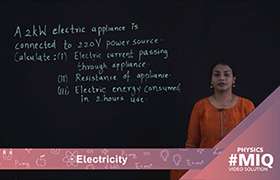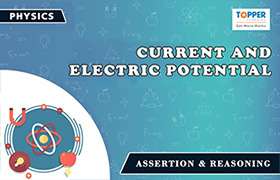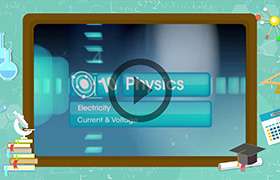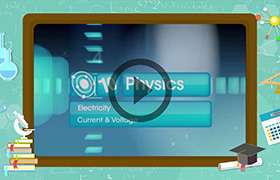CBSE Class 10 Answered
how does the electric motor works according to fliming"s left hand rule ?
Asked by jyadav1509 | 03 Sep, 2014, 08:22: PM
An electric motor is a device that converts electrical energy to mechanical energy. It works on the principle that when a rectangular coil is placed in a magnetic field and current is passed through it, a force acts on the coil which rotates the coil continuously. The shaft attached to the coil also rotates when the coil rotates. Thus electrical energy supplied to the motor gets converted to mechanical energy.
An electric motor consists of a rectangular coil ABCD of insulated copper wire. This coil is placed between the two poles of a magnet.

Current enters the coil from a source battery through the conducting brush X and flows back to the battery through brush Y. Thus current in arms AB and CD is in opposite directions.
Fleming’s left-hand rule states that " On stretching the thumb, forefinger and middle finger of the left hand in such a way that they are mutually perpendicular to each other. If the first finger points in the direction of field and the middle finger in the direction of the current, then the thumb gives the direction of motion or the force on the conductor".
On applying Flemings left hand rule here, (i.e we know the direction of magnetic filed and direction of current flowing through the coil, with Flemings left hand rule we can find the direction of force acting on the coil.) we can find that the force acting on arm AB pushes it downwards while the force acting on arm CD pushes it upwards. Thus, the coil and the axle rotate anti-clockwise. At half rotation, the current in the coil gets reversed with the help of a commutator. This reverses the direction of force acting on the two arms AB and CD. However, these arms have reversed positions after half rotation.
Thus, the coil and the axle rotate in the same direction, i.e. anti-clockwise.
Thus the electrical energy supplied to the coil gets converted to mechanical energy.
Answered by Jyothi Nair | 04 Sep, 2014, 09:00: AM
Application Videos
Concept Videos
CBSE 10 - Physics
Asked by saanviyadla | 24 Jan, 2024, 07:06: PM
CBSE 10 - Physics
Asked by ruparus | 03 Nov, 2022, 10:02: PM
CBSE 10 - Physics
Asked by ksheluka41 | 03 Nov, 2022, 05:33: PM
CBSE 10 - Physics
Asked by ragavarshinik07 | 30 Mar, 2022, 07:17: PM
CBSE 10 - Physics
Asked by suneethasri83 | 01 Jan, 2022, 02:59: PM
CBSE 10 - Physics
Asked by shashankkatekar | 28 Dec, 2021, 07:26: PM
CBSE 10 - Physics
Asked by sunilgupta9419158173 | 20 Jul, 2021, 01:14: PM
CBSE 10 - Physics
Asked by swatipuspapatel | 08 Jul, 2021, 04:36: PM







